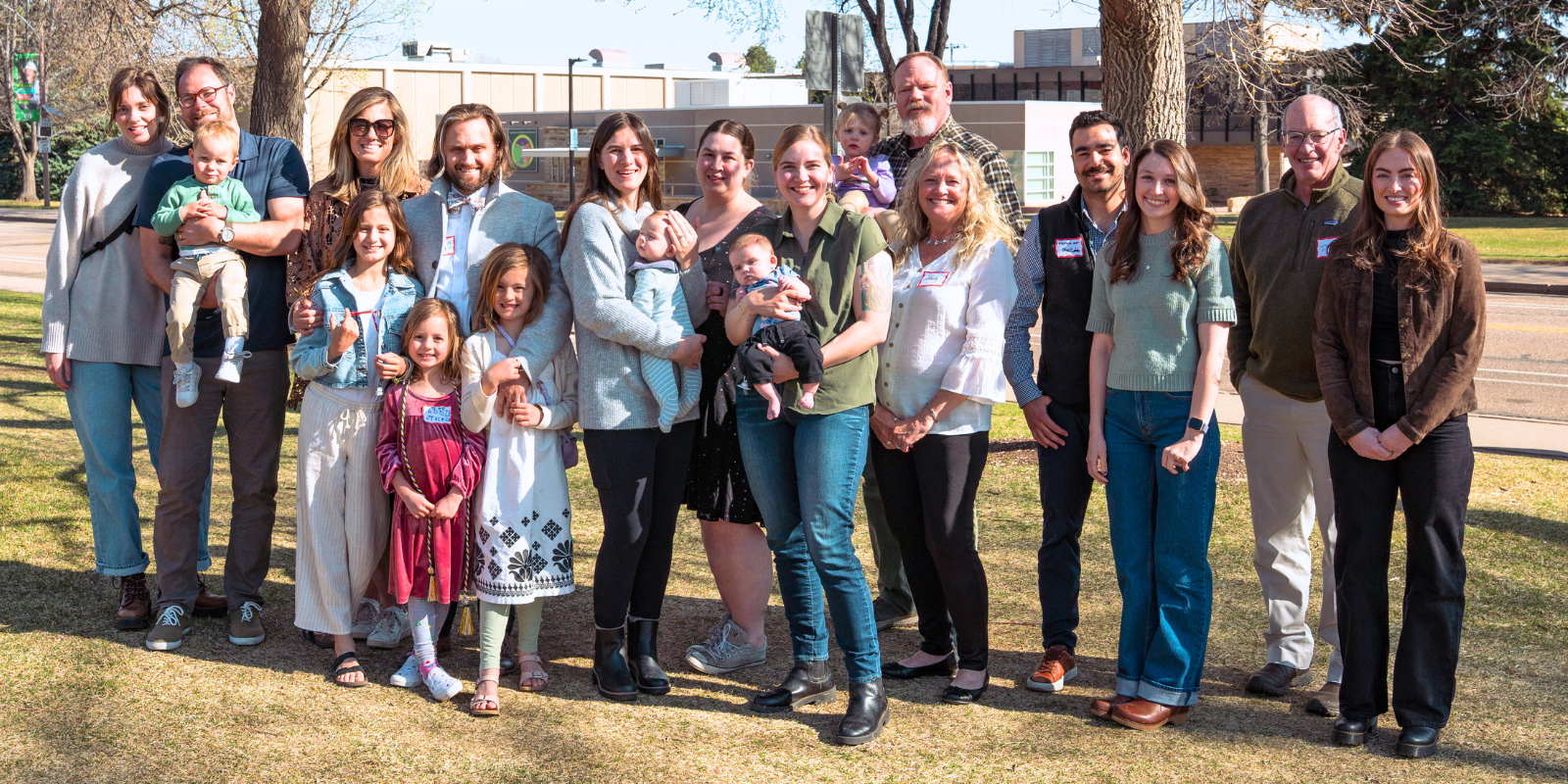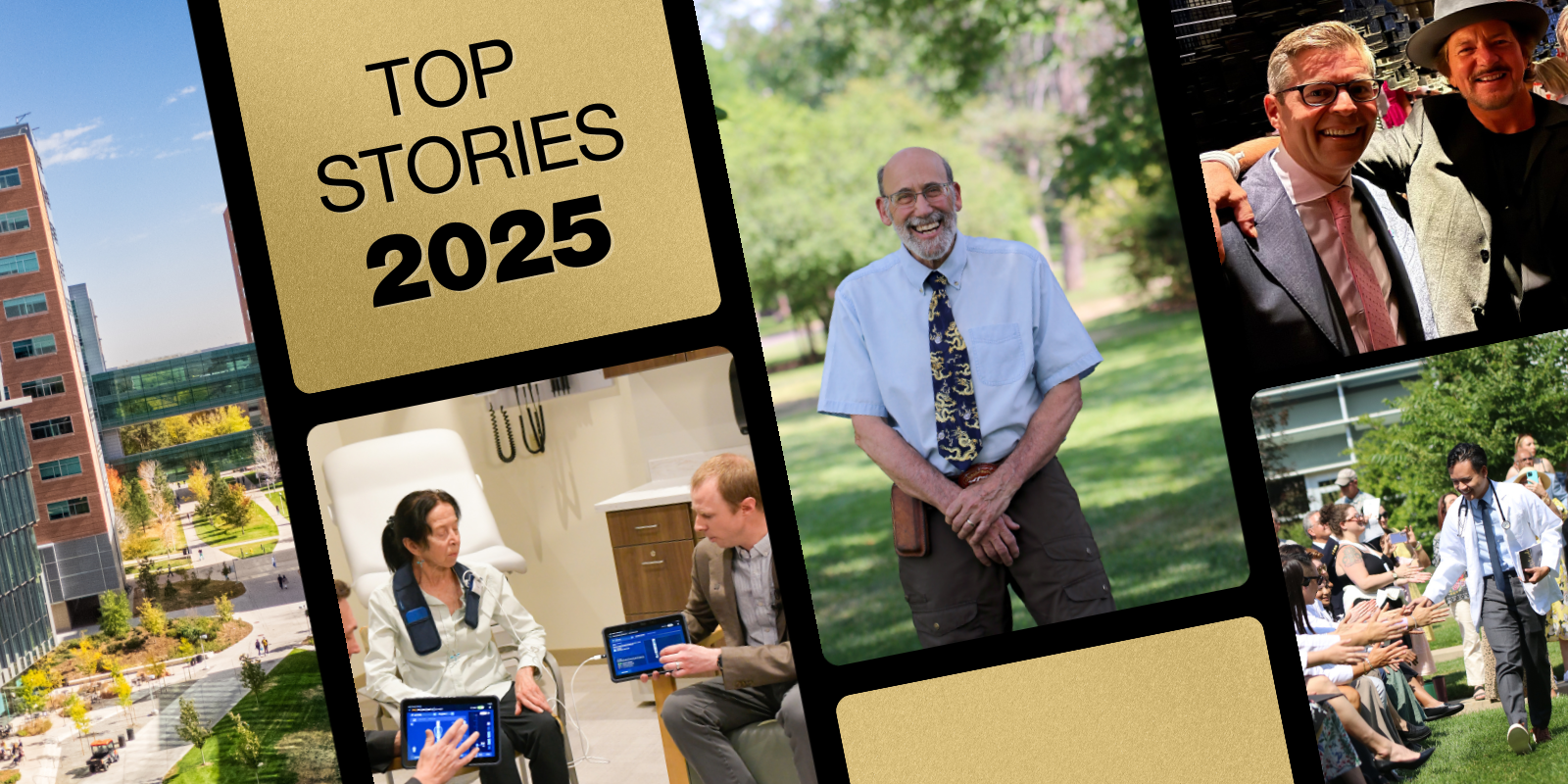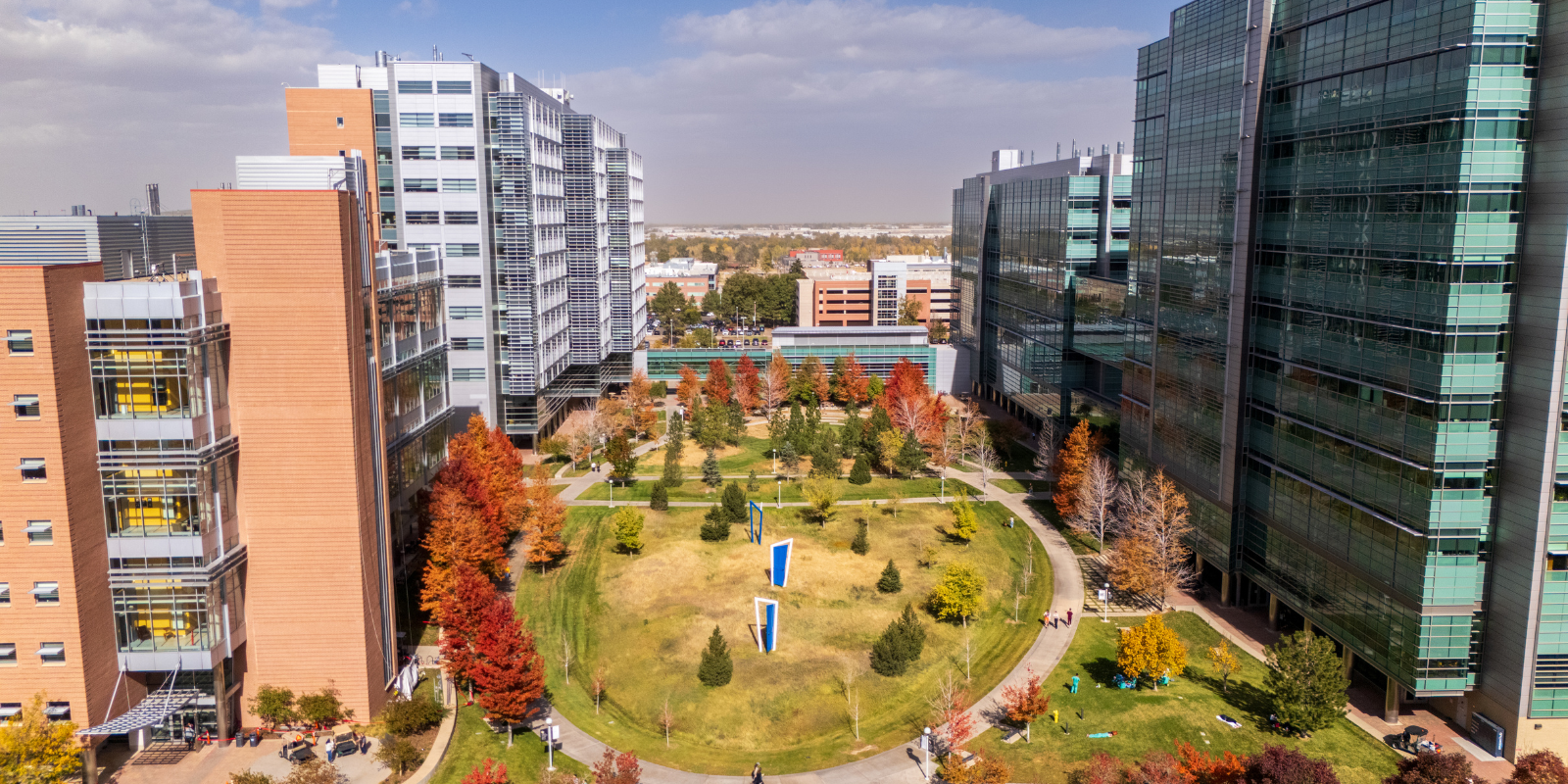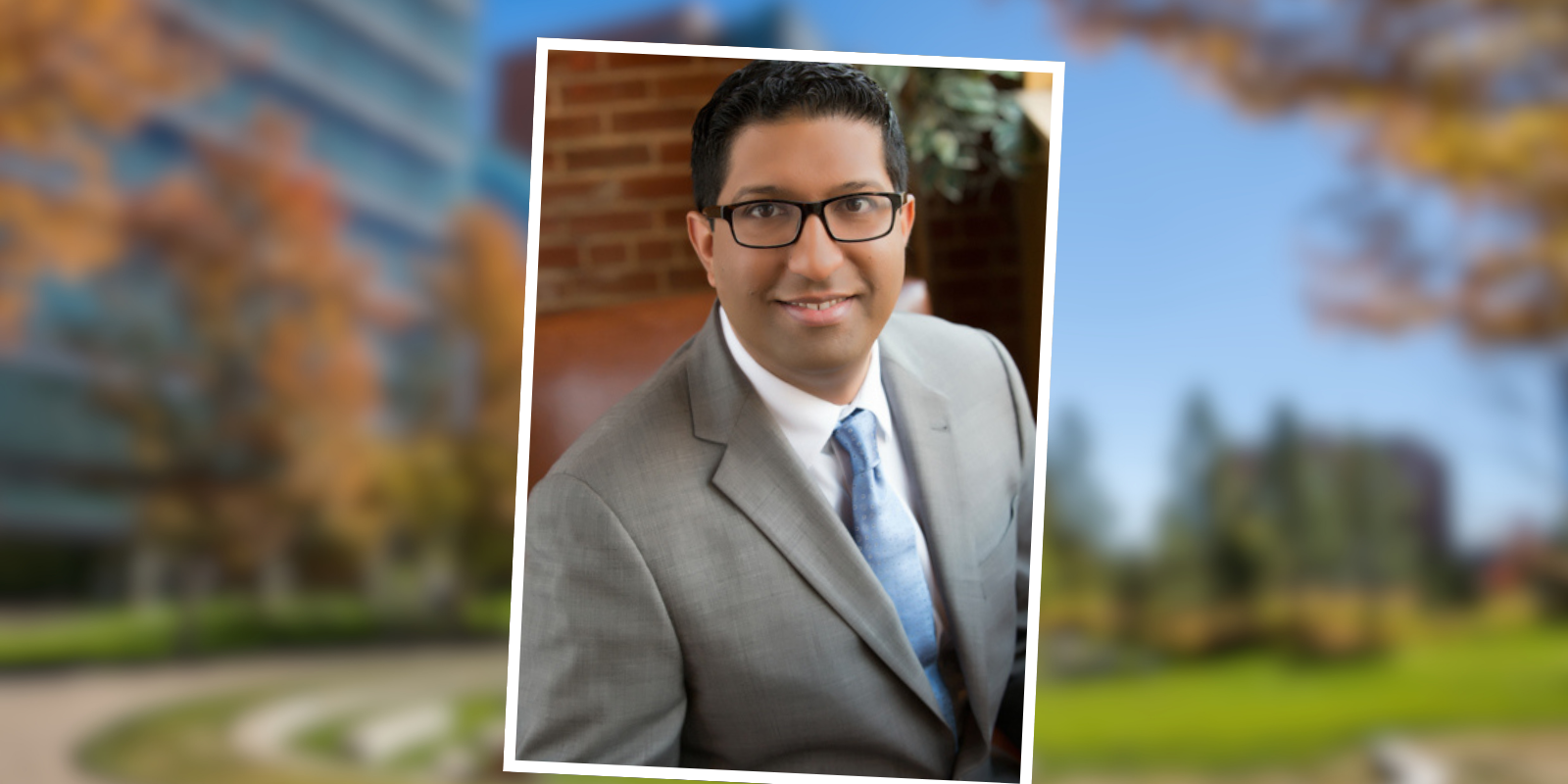On May 19, seven medical school graduates will walk across the stage at the University of Colorado School of Medicine’s Hooding and Oath Ceremony wearing green and yellow cords – a signifier of the four years they spent studying at the Fort Collins Regional Medical Campus, the Colorado State University branch of the CU School of Medicine.
The cohort of graduates marks the first from a groundbreaking collaboration between CU and CSU that began in 2021 with 12 students — the five students who started the program and are not graduating this year are taking research years or other pathways to further delve into their studies.
Megan Mazzotta, who begins a residency in psychiatry at Oregon Health and Science University after graduation, remembers the first day of orientation four years ago. Before the 12 students was a big whiteboard where the group was instructed to brainstorm goals for the branch.
“We got to develop culture in a way that not a lot of other medical schools or even branches get to,” she says. “One of the first words we wrote up on the board was ‘community.’ We wanted to be a tight knit group founded on comradarie instead of competition.”
That’s exactly what manifested over the course of four years of studying and preparing for a career in medicine.
“We wanted to be able to build each other up and build on top of each other, because we knew that's what was going to make the strongest branch,” Mazzotta says. “Even from year one, when it was only the 12 of us and we didn't have any subsequent classes or any classes above us, we were constantly planning and saying, ‘OK, what can we do for the next class?’ I think in the long run that made us great problem solvers and highly adaptable.”
The Fort Collins appeal
Mazzotta didn’t initially have the Fort Collins branch on her list when she began applying to medical schools, but when she learned about it through the CU School of Medicine application, she knew it would be an ideal match.
“As I was submitting my application, a little bubble popped up to write another short essay and explained the opportunity to be one of the pioneers of the Fort Collins branch,” Mazzotta recalls. “I went on the website and learned about the branch’s One Health focus which is a philosophy centered on the connection between human, environmental, and animal health, and integrating that perspective into medical practice. The concept instantly resonated with me. It felt like the perfect intersection of my undergraduate studies in environmental science and everything I hoped to bring into my future as a physician. What better way to begin than by embracing that vision from the very start of medical school?”
The unique partnership between CU and CSU, Colorado's two largest universities, works closely with the College of Veterinary Medicine and Biomedical Sciences at CSU to provide foundational science and One Health education opportunities and allows students an intimate environment to learn, research, and grow in the field.
Medical students develop strong relationships with attending physicians early on and train in northern Colorado's strong clinical community. Even with no upper classmen above the inaugural cohort of students, it wasn’t difficult to establish valuable connections and find caring mentors.
“You get to develop deep connections with the preceptors that you're working with, and that automatically turns into a mentorship without even putting a lot of effort into it,” Mazzotta says.
Finishing a chapter of firsts
Each of the seven graduates have matched into residencies across the country, ranging from psychiatry to emergency medicine, family medicine, anesthesia, and pediatrics.
Despite having different interests and passions, the students were able to lean on each other, especially when it came to understanding different topics or areas of study.
“From the very beginning, even when we didn't know who was going to choose what specialty, we very quickly found out who had what passions and who had different niches. It led to a learning environment where there was a lot of camaraderie. If someone excelled in a particular subject, they would step up to support those who needed help.”
Those virtues will follow the graduating students into their next chapter and guide future cohorts, too.
“My message to the classes coming up behind us and students interested in our branch is that the ability to tailor your education to your specific needs and future goals and aspirations is a really special thing,” Mazzotta says. “ I’m proud of the culture we built and that it has carried on through each class. It is also incredibly rewarding to hear how much the other students are enjoying the changes we helped implement to the curriculum and to know that our feedback has shaped something meaningful, lasting, and sustainable.



